Arts
Art amidst dust and rubble
For the fifth year running HSBC Colombo Fashion Week brought together art and fashion. This year’s Art Connect, took place on March 19 and 20 at the old colonial Laksala building at York Street in Colombo 1. Under the theme “Co-liberate” Art Connect featured six Sri Lankan artists – Mahen Perera, Koralegedara Pushpakumara, Pradeep Chandrasiri, Sujeewa Kumari, Pala Pothupitiya and Kavan Balasuriya, each presenting five works based on this theme.
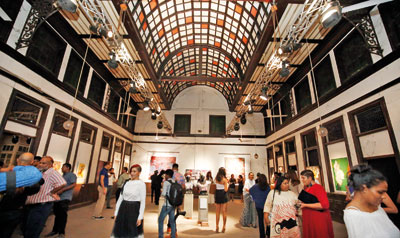
The gallery at Laksala and some of the works on display. Pix by M.A. Pushpa Kumara
The venue seemed to be following the recent trend in Colombo’s art scene of utilizing unconventional and derelict spaces as galleries. The path to the exhibition space located on the topmost floor of the building, was riddled with dust, rubble and cobwebs. Adding to the surreal atmosphere, at the end of the eerie pathway was a well lit space – a typical gallery, with mood music playing throughout.
For artist Pradeep Chandrasiri the modern definitions of Art and Fashion, due to the latter being widely incorporated in our modern lives, have led it to be seen as separate phenomenons. However, they both derive from the same cognitive practices and thus all art forms fall on an equal level of importance, he believes. Mahen Perera’s interpretation was an exploration of the innate mutability of materials and fabric. His series of artwork seemed to track the manipulation endured by fabrics during the fashion process.
There were also several series of works that presented social and political commentary. Koralegedara Pushpakumara’s works are an expression of the socio-political climate of post war Sri Lanka. The series uses distinct motifs of the poisonous Glory Lily (known as Niyangala in Sinhala) and the 2×2 carpenter pole, to showcase the violence behind the beautiful and ordinary, which acts as a metaphor of the violence brimming under the surface of our ‘peaceful’ communities. Pradeep Chandrasiri’s series too contains political commentary, with the vines and leaves that dominate the dark canvas representing the facade used to hide atrocities committed by the state mechanism.
To confront the issues of colonialism and nationalism, Pala Pothupitiya blurred the lines between traditional Sri Lankan crafts and the Eurocentric concept of fine art, through a series of colourful paintings. The vibrant paintings featured traditional motifs such as ‘liyawel’ and the sword-wielding lion as well as the craft techniques and primary colours usually associated with such traditional art forms. This blurring of lines is important as according to Pothupitiya the labelling of local art traditions as crafts was a form of institutional colonisation, done with the aim of devaluing local art traditions. His series was inspired by the work of his father Somasiri Pothpuitiya, a costume designer for southern dance and ritualist. Though not billed to showcase at the event, Somasiri’s intricately beaded tradtional headdresses and jackets were also on display at the exhibition.
Sujeewa Kumari’s mixed media artwork series presented the dual aspects of beauty and destruction. The layers of faces, de-constructed bodies and flowers juxtaposed against the strong bold and sometimes dark backgrounds, reflected a sense of depth and poetry. Kavan Balasuriya’s work was an abstract series of geometric and organic motifs and formations, exploring the relationship between impermanence, negative space and metaphorical shadow play.
Art Connect , which marked day one of Fashion Week is one of many collaborative initiatives taken by HSBC CFW. The event seems to broaden the platform provided by fashion week beyond that of just design and fashion, and highlights the various cultural and lifestyle aspects Colombo has to offer.
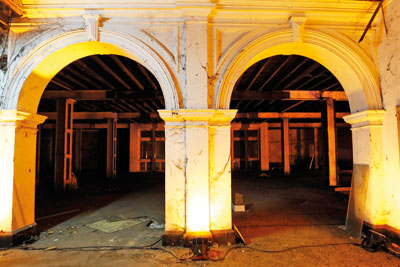
Unconventional setting: The facade of the Laksala building in Fort
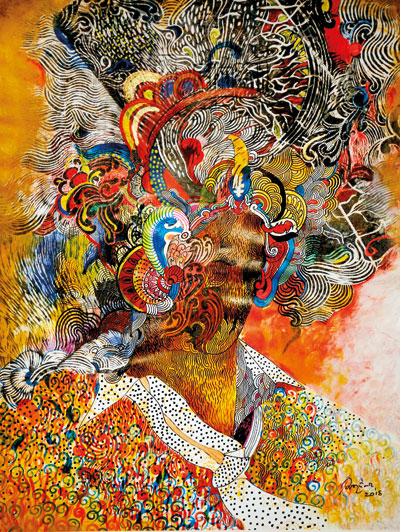
Pala Pothupitiya
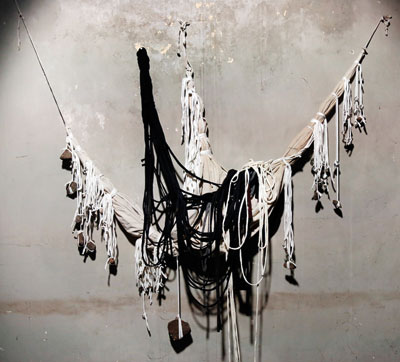
Mahen Perera
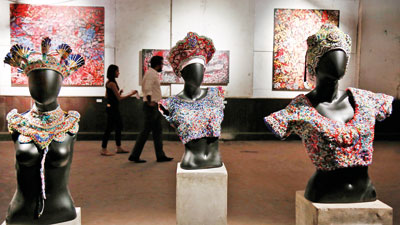
Somasiri Pothupitiya
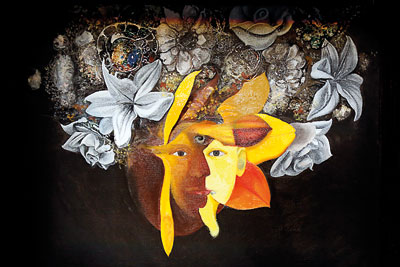
Sujeewa Kumari

